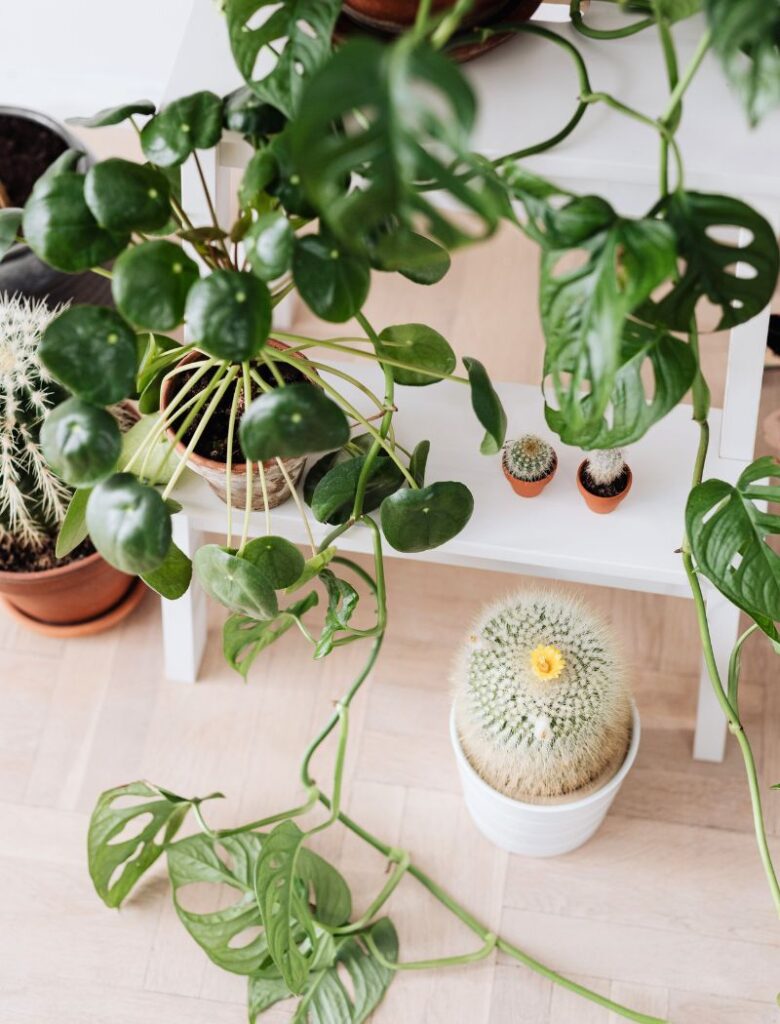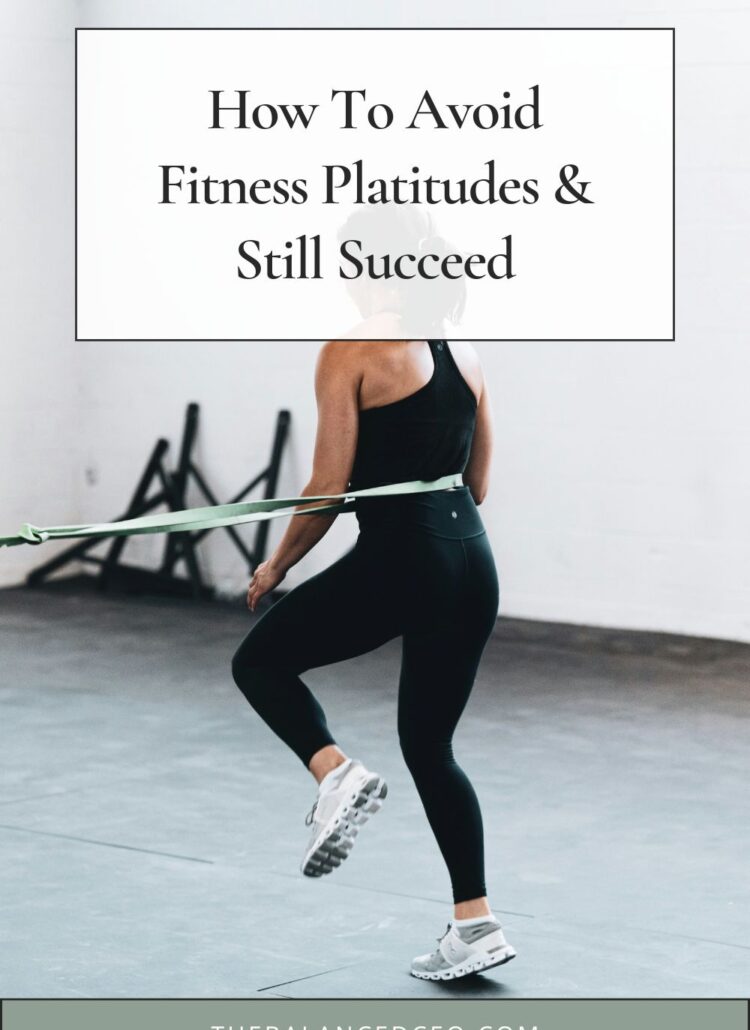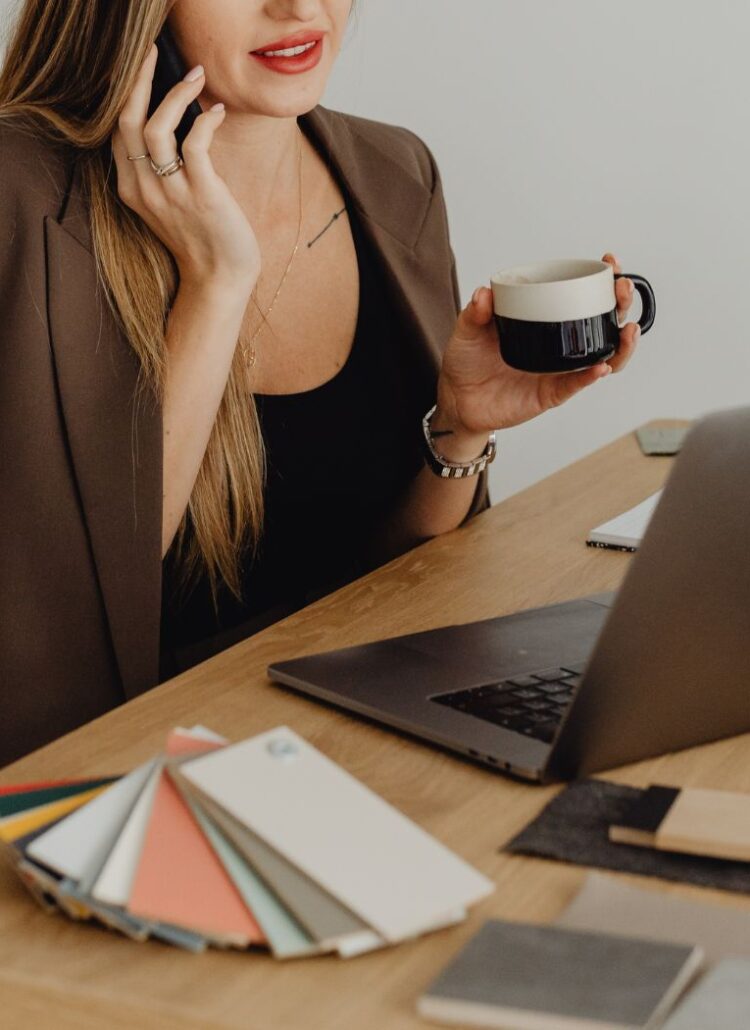This post may contain affiliate links, which means I’ll receive a commission if you purchase through my links, at no extra cost to you. Please read full disclosure for more information.

Looking to breathe new life into your living space? The answer might be as simple as adding a few leafy friends to your home. Houseplants offer amazing benefits that go way beyond mere aesthetics.
1. Alleviates Stress and Boosts Your Mood
Houseplants infuse a sense of calm into any room, which can improve your overall mood. Studies show that interacting with indoor plants — watering, pruning or simply being near them — lowers stress and anxiety levels.
Nurturing a plant has a meditative quality. It offers a small break from the daily pressures of life and cultivates a sense of well-being.
2. Promotes Focus and Productivity
Plants around your workspace may help you stay focused so you perform optimally. Research shows that plants can increase productivity by up to 15%. For anyone working from home or studying, adding a few plants can create a refreshing environment that supports clearer thinking and higher output.
The presence of plants has also been linked to increased creativity. Thus, they’re a fantastic addition to areas where you brainstorm, work on projects or pursue hobbies.
3. Increases Humidity in Dry Spaces
Indoor air can get dry, especially during the colder months when heating systems are in use. Houseplants naturally add humidity to the air through the process of transpiration.
As they absorb water, some of it evaporates through the pores on their leaves, adding moisture to the room. Higher indoor humidity soothes dry skin conditions like eczema, sinus irritation and respiratory issues, making your home comfortable for occupants.
4. Acts as a Natural Barrier Against Noise
Certain plants help reduce noise in your home. Thick, broad-leaved plants, evergreen climbers and bamboo are said to absorb, dissipate or block sound waves. While they won’t entirely soundproof a space, they can help make a room feel quieter and more peaceful, which is especially beneficial in busy households or city apartments.
5. Supports Your Connection with Nature
Living with houseplants offers a meaningful way to stay connected to nature indoors, which can help you feel more grounded. This link to nature has been shown to have therapeutic effects that sustain mental health, providing a small escape from technology and the fast pace of modern life.
A recent study indicates plants with high leaf density deliver the biggest boost to your well-being. So, the next time you’re out shopping for new additions, give a second thought to that golden pothos, palm or weeping fig.
6. Cultivates Mindfulness
Taking care of plants provides a simple way to practice patience and responsibility, which encourages mindfulness. Since they require routine care — watering, light adjustments and sometimes repotting — they inspire you to create a consistent daily or weekly habit. Over time, you develop a sense of responsibility over your green babies and learn to appreciate their growth — a win-win for your mindfulness journey.
How to Get Started with Houseplants
If you’re new to caring for plants, here are some beginner-friendly tips to set you up for success.
1. Choose Easy-to-Manage Plants
Unless this isn’t your first rodeo, start with plants that require minimal maintenance. Those that are native to where you live are your best option, but pothos, snake plants and succulents will do just fine.
These varieties are resilient and can handle a range of light, temperature and moisture conditions, making them ideal for beginners. As you gain confidence being a plant parent, branch out to more complex varieties.
2. Pick the Right Size Planter
To support healthy growth, choose a planter that’s sized correctly. It should be about 1-2 inches wider in diameter than the plant’s current size.
If repotting into a larger container, give your plant 2-4 inches of extra space to grow. This way, the roots have enough room to stretch out. Just remember not to put too much soil, which can lead to water retention and root rot.
3. Use Quality Potting Mix
A good potting mix is vital for healthy houseplants. Most benefit from a blend that’s light and drains well.
Look for potting soil that includes materials like perlite, vermiculite, or sand to ensure proper aeration and prevent waterlogging. For succulents and cacti, choose a mix specifically designed for their needs.
4. Select the Right Spot for Your Plants
Understanding light levels in your home is essential to determining plant placement. Those like pothos and snake plants do well in low light, while succulents and cacti thrive in bright, direct sunlight. Observe where natural light falls throughout the day to find the best spots for your plants.
5. Water with Care
A common mistake beginners make is overwatering. While each plant has unique needs, a good rule of thumb is to let the soil dry out slightly between waterings, especially for succulents.
A quick trick is to stick your finger into the soil about an inch deep. If it’s dry, your plant is ready for water.
6. Fertilize Sparingly
Houseplants benefit from extra nutrients during the growing season — typically spring and summer. Use a balanced, water-soluble fertilizer once a month.
Be cautious not to over-fertilize, as too much can harm the plant. During fall and winter, most plants go into a period of dormancy and don’t need additional feeding.
7. Watch for Pests
Pests like spider mites and aphids can sometimes be an issue. Fortunately, there are easy, nature-friendly ways to keep them at bay.
Ensure you’re using sterilized potting mix. This earth has been heated to 180 degrees Fahrenheit to ensure no bugs or eggs are present. Regularly inspect your plants — especially the undersides of leaves — for signs of infestation, as well. If you spot any, wipe the leaves with a damp cloth, and use mild insecticidal soap or vacuum them away.
Should they reappear, you have a pest problem. Bring in the big guns with organic pesticides as ammunition.
Bring a Little Green Inside
Starting a houseplant collection is a wonderful way to make your space more inviting while enjoying improved humidity, better focus, and a balanced mood. With a bit of attention and care, even a small selection can make a big impact on your home.
So, choose a few beginner-friendly plants, grab a pot that fits and get ready to add some greenery to your life. Happy planting!

Cora Gold
Contributor





Leave a Reply